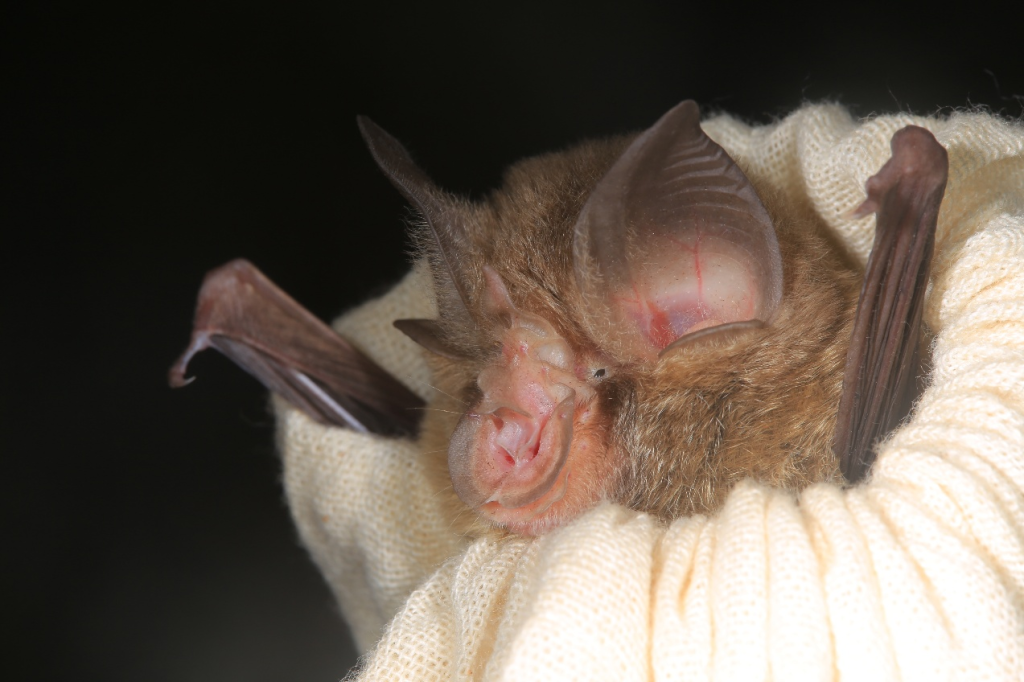
The Eastern Horseshoe Bat: A Delicate Hunter in the Dark
The Eastern Horseshoe Bat (Rhinolophus megaphyllus) may be a rare sight at Capricorn Caves, but it’s certainly no stranger. These fascinating creatures are native to eastern and northern Australia, stretching from Victoria to Cape York, and are also found in parts of Papua New Guinea.
A Nose for Navigation
One of the most unique features of the Eastern Horseshoe Bat is its horseshoe-shaped noseleaf—the inspiration behind its name. This distinctive structure plays a key role in the bat’s echolocation system, allowing it to navigate and hunt with incredible precision.
These bats are designed for close-quarters hunting. Their wings are broad and short, perfectly built for hovering and tight manoeuvres. Unlike other bats that use long-range sonar, Eastern Horseshoe Bats produce high-frequency echolocation calls that travel just over a metre—but provide detailed snapshots of their immediate surroundings. This helps them track prey like moths, beetles, and flies at very close range.
With a slow, sometimes erratic flight pattern, they can effortlessly dart through dense vegetation, making them perfectly suited for life under forest canopies and inside narrow cave passages.
Five Fast Facts
- Size: 6–10 grams with a wingspan of ~30 cm
- Habitat: Eastern and northern Australia + Papua New Guinea
- Diet: Flying insects like moths, beetles, and flies
- Roosting: Prefers caves, old mines, and hollow trees
- Family: Yinpterochiroptera suborder, like our ghost bats
Physical Characteristics
R. megaphyllus is a small to medium-sized bat. Like other members of the Rhinolophidae family, it features a complex noseleaf structure that helps focus sound. Its fur is typically soft grey-brown, with a lighter shade underneath—perfect camouflage against the stone walls it often calls home.
Habitat & Range
This species is typically found along Australia’s eastern coastline, from northern Queensland to New South Wales, and extends into the tropical forests of Papua New Guinea. They’re most comfortable in moist habitats—rainforests, wet sclerophyll forests, and environments with easy access to roosts such as caves or abandoned mines.
Behaviour & Diet
The Eastern Horseshoe Bat is a nocturnal insectivore. Using their nose-based echolocation, they send out high-frequency sounds through their nostrils and interpret the echoes to detect and hunt prey. Their fluttering flight helps them move skillfully through dense foliage in pursuit of insects.
They may roost alone or in small colonies, and here at Capricorn Caves, we often see individuals sharing roosting spaces with other bat species.
Reproduction
Mating generally occurs in winter, with females giving birth to a single pup in November. The young are born hairless and helpless but grow quickly, becoming independent by 6–8 weeks. During this time, maternity colonies may form to provide warmth and protection for the pups.
Interestingly, we’re still unsure where the primary maternity cave is located within the Mt Etna region. In early life, pups cling to their mothers in flight using a false pubic teat, and mothers are strong enough to carry young that are nearly their own size.
Conservation Status
The Eastern Horseshoe Bat is listed as Least Concern, thanks to its wide distribution and stable population. However, like many bat species, it remains vulnerable to:
- Habitat destruction
- Disturbance of roosting sites
- Pesticide use, which affects their insect food supply
Ecological Importance
These little creatures play a huge role in maintaining ecological balance. As voracious insectivores, they help control populations of agricultural pests and even mosquitoes. Their presence is a strong indicator of a healthy, biodiverse ecosystem.
Whether you’re a wildlife enthusiast, budding naturalist, or just love a good cave-dwelling mystery, the Eastern Horseshoe Bat is a beautiful reminder of the hidden wonders thriving in the dark. Keep an eye out next time you visit Capricorn Caves—you might just spot one of these elusive little flyers!















